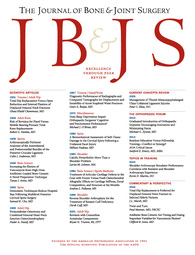
HAND & WRIST
Preservation of the ulnar bursa in the carpal tunnel does not lead to improved outcomes
J Bone Joint Surg Am. 2006 Nov;88(11):2432-8118 patients with carpal tunnel syndrome were randomized to receive treatment involving the preservation of the parietal layer of the ulnar bursa beneath the flexor retinaculum or division of the ulnar bursa during open carpal tunnel decompression. Over 8 to 9 weeks, there was no significant difference between the two groups for grip strength, scar pain, symptoms and disability. The group with preserved ulnar bursae demonstrated a lower rate of wound infection and inflammation than the group with the divided ulnar bursa.
Unlock the full ACE Report
You have access to {0} free articles per month.Click below to unlock and view this {1}
Unlock NowCritical appraisals of the latest, high-impact randomized controlled trials and systematic reviews in orthopaedics
Access to OrthoEvidence podcast content, including collaborations with the Journal of Bone and Joint Surgery, interviews with internationally recognized surgeons, and roundtable discussions on orthopaedic news and topics
Subscription to The Pulse, a twice-weekly evidence-based newsletter designed to help you make better clinical decisions
Exclusive access to original content articles, including in-house systematic reviews, and articles on health research methods and hot orthopaedic topics
Or upgrade today and gain access to all OrthoEvidence content for just $1.99 per week.
Already have an account? Log in


Subscribe to "The Pulse"
Evidence-Based Orthopaedics direct to your inbox.
{0} of {1} free articles
Become an OrthoEvidence Premium Member. Expand your perspective with high-quality evidence.
Upgrade Now












































































